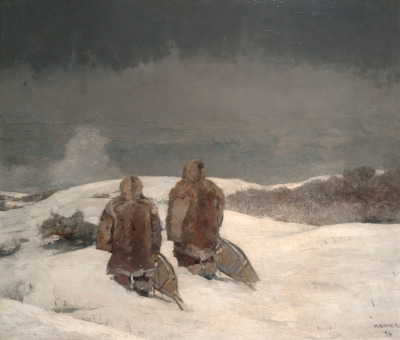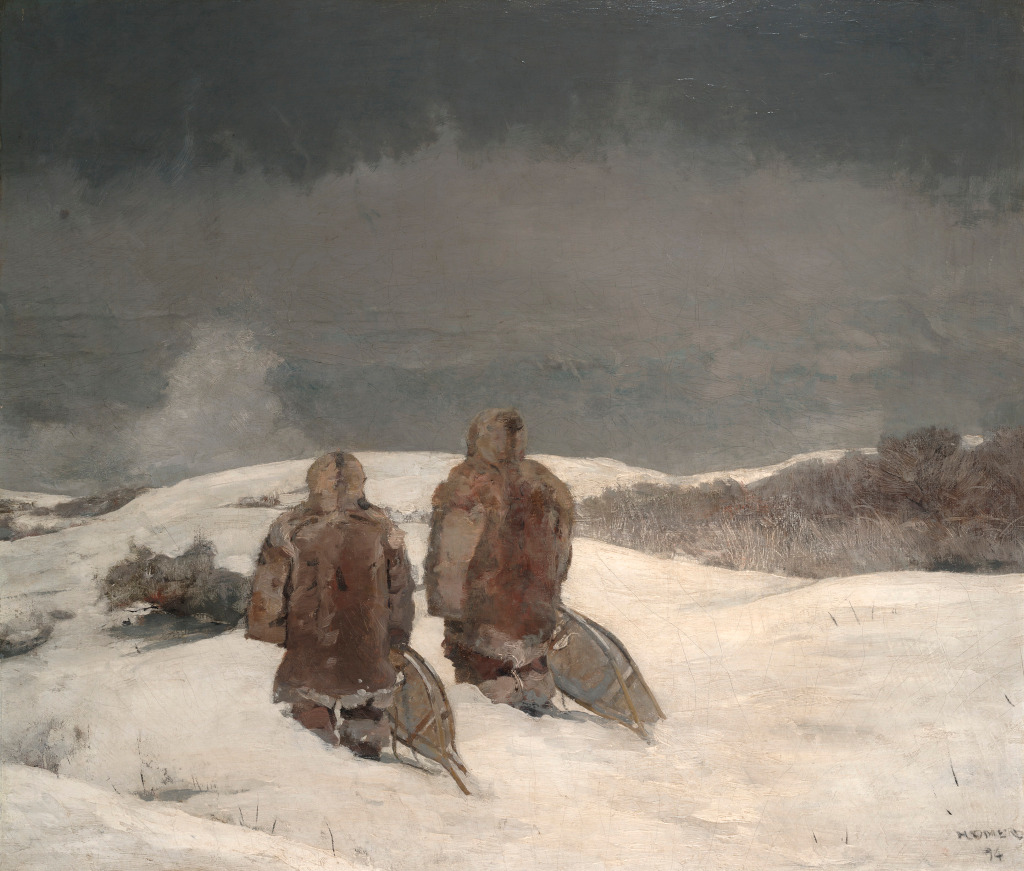Below Zero is an 1894 artwork by Winslow Homer, which resides today at the Yale University Art Gallery. It is one of relatively few paintings that were set within snowy or icy conditions.
We find two figures in the foreground, staring outwards across a snow-covered landscape. They are dressed for the occasion, with thick clothing to protect them from the cold. The nearest foreground is covered entirely in shades of white, with the odd detail appearing from beneath the snow. Further back we find a dark mass of colour which dominates the sky, leaving very little discernable detail. One can just make out perhaps a tree to the left hand side whose silhouette is slightly lighter than the colours that surround it. The colours and content give us a feeling of cold, quiet and beauty within this piece, as many elements sleep for the winter period. It was rare for Homer to focus on this season, where as other artists have actually specialised in it, particularly in previous centuries. It makes an interesting addition to the display of the Yale University Art Gallery who cover American art in good depth, alongside a number of other cultures and civilisations within their eclectic selection.
The artist would write to his older brother at around this time and explained about how he had just completed Below Zero, and was happy with the completed artwork. He himself had struggled with the winter that year but had lifted his spirits by producing a number of impressive artworks based on the climate at that time. The region of the US in which Homer spent much of his life would experience particularly cold winters and although he was able to harness this for some of his paintings, he eventually decided to go abroad for his winters, such as to the Caribbean. That happened more and more in later life, and brought in another alternative selection of work with bright colours and an attention to life on these exciting islands. He would never lose his love for the US, though, and helped to encourage other artists to include the beauty of this nation within their paintings. Previously European styles has overshadowed any unique qualities within American art, but that would eventually change over time.
Homer's travels were an important ingredient to his success. He moved his studio in order to get better access to the US coast but his holidays would bring other environments into play, helping to broaden the scope of his career. This naturally brought about variations in tone and content, allowing his work to attract a wider audience and also helping others to learn more about places that they may not previously have been familiar with. Ultimately, his biggest impact was in convincing the art world of the importance of American art, and how it could lead rather than follow. This transition in opinion eventually reached the present day, where many important art movements have been started within the US, with New York today perhaps being considered as the centre of the international art world, marking the remarkable rise in American art over the past two centuries.





